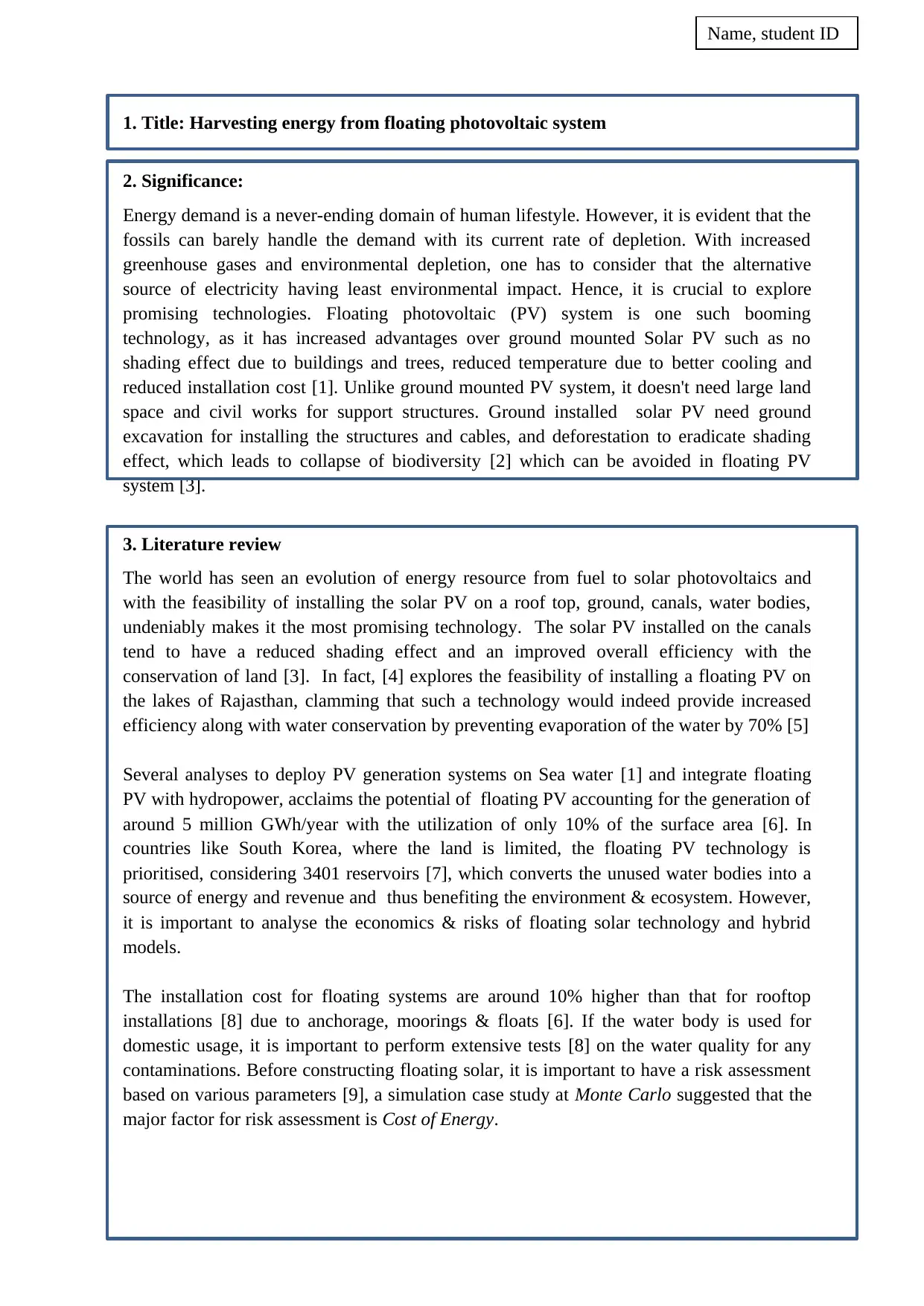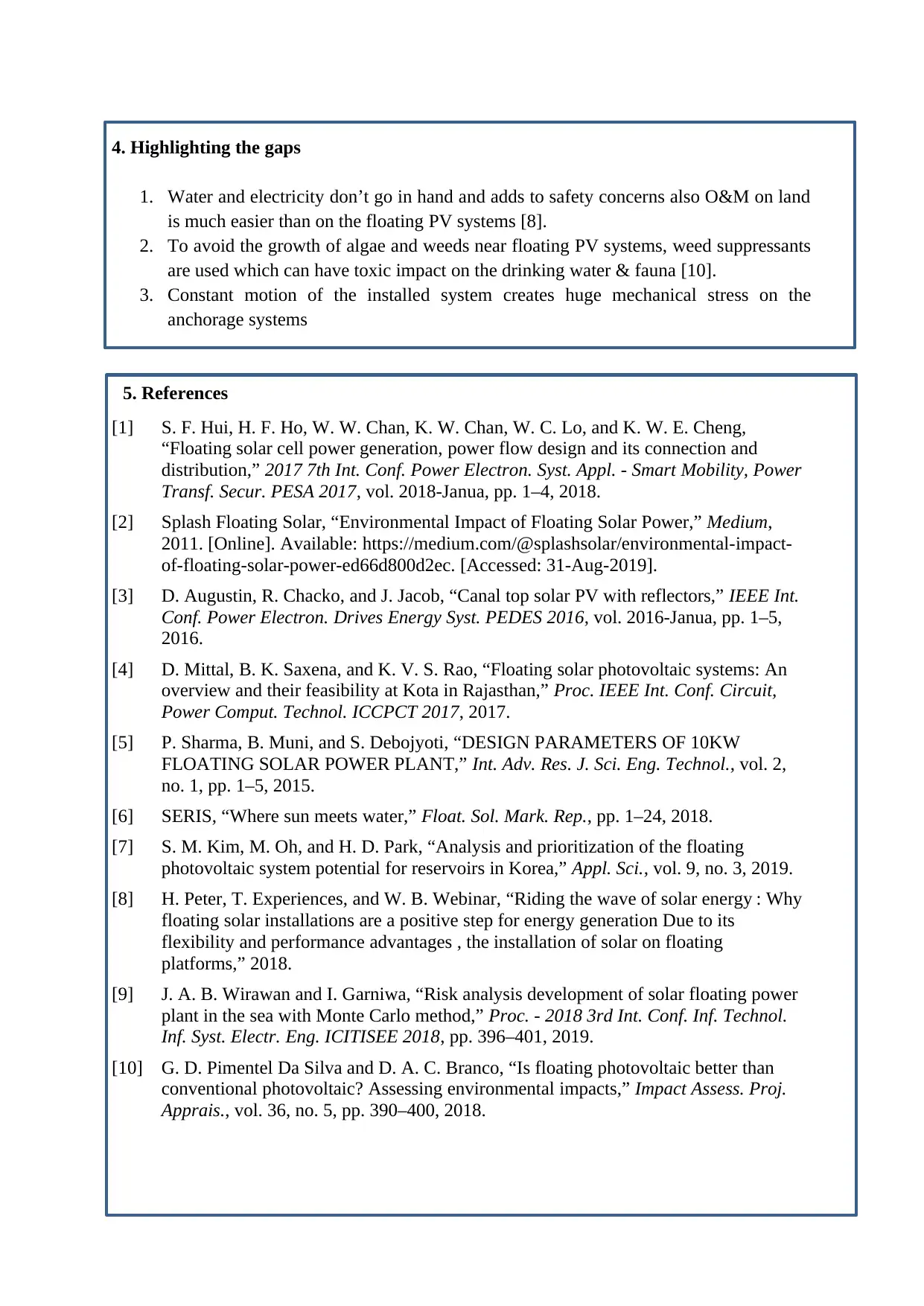Analysis of Floating Photovoltaic System for Energy Harvesting Report
VerifiedAdded on 2022/12/23
|2
|1121
|58
Report
AI Summary
This report, prepared by a student, investigates the potential of floating photovoltaic (PV) systems as a sustainable energy source. It begins by highlighting the significance of the technology, emphasizing its advantages over traditional ground-mounted solar PV, such as reduced shading and improved cooling. The report then provides a comprehensive literature review, examining the evolution of PV technology, its application in various water bodies, and the benefits like land conservation and water evaporation reduction. It discusses studies on floating PV in different regions, including South Korea and Rajasthan, and presents analyses of economic aspects, risks, and the importance of water quality testing. The report identifies gaps in the current research, including safety concerns, environmental impacts related to weed suppressants, and mechanical stress on anchorage systems. The report concludes by referencing key studies and highlighting areas for further research and development in this emerging field.
1 out of 2






![[object Object]](/_next/static/media/star-bottom.7253800d.svg)